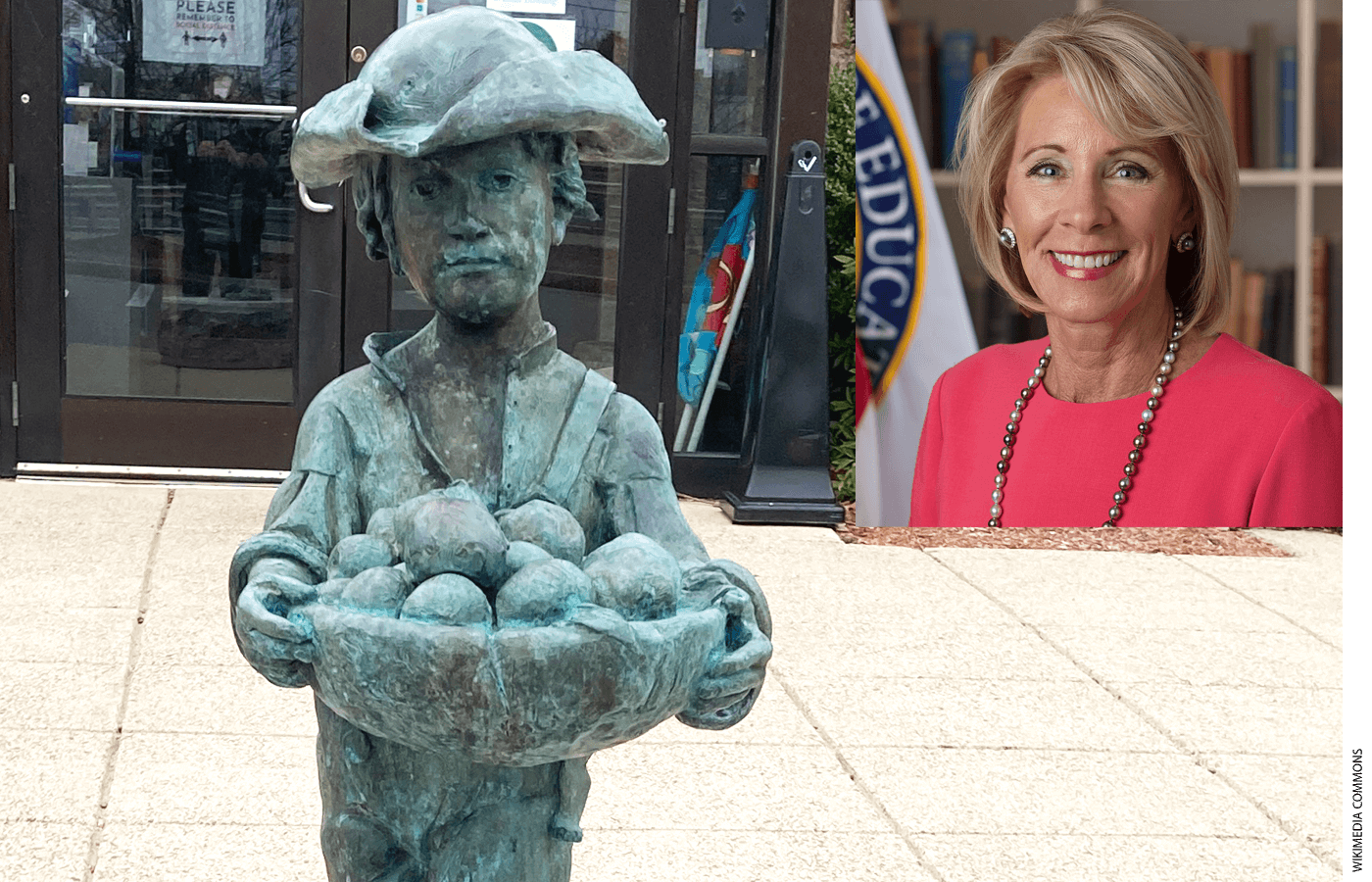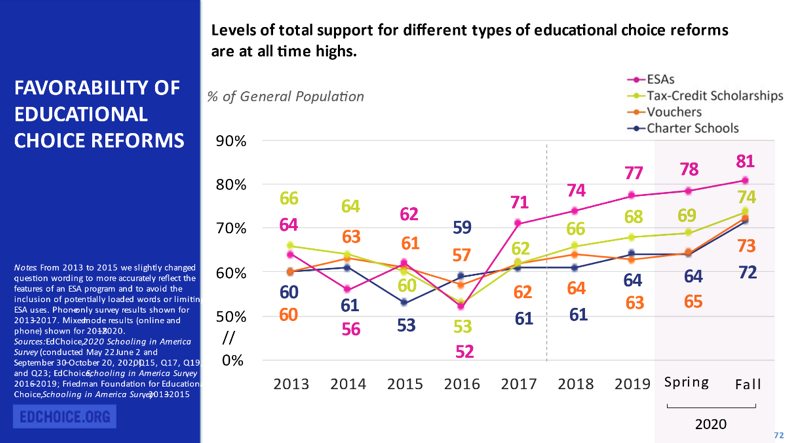
Betsy DeVos must be quietly enjoying her retirement from public office. After resigning in protest against presidential actions during the closing days of the Trump Administration, she is beginning to see the fruits of her steady advocacy of school choice throughout her term in office. When she took office in 2017, public support for choice had been in the doldrums.Throughout the latter years of the Obama administration choice support drifted downward, as can be seen in the graph from EdChoice polling shown below. Indeed, support for the education savings account idea was dropping so rapidly in the survey, its designers altered the question in 2017 to make it more savings-account friendly, thereby giving it an artificial 19 percentage boost in its support level.
DeVos’s nomination as secretary of education hardly helped the choice cause. The battle in the Senate over her confirmation gave choice opponents an opportunity to mobilize public opinion against any policy that seemed to take money away from the public schools. Charter advocates began fighting among themselves, and the choice movement in general seemed in disarray at the very time it had access to the highest levels of the federal government. The capture of both the presidency and Congress by the Democratic party seemed to drive the final nail into the coffin. I discuss the state of the landscape in a report, “Toward Equitable School Choice,” issued as part of the Hoover Education Success Initiative.
But within three months of the new administration’s arrival in office, school choice has rebounded. As I write in an oped in The Wall Street Journal, teacher unions are on the defensive and state legislatures are enacting choice initiatives and expansions in Arkansas, Florida, Indiana, Kentucky, Montana, West Virginia, and elsewhere.
EdChoice, Excellence in Education, the National Alliance for Public Charter Schools, the American Federation for Children (Betsy DeVos’s home organization), and other advocacy groups are right to claim success, but the driving force seems to be public dismay with the district school response to Covid-19. The same graph from EdChoice that showed support drifting downward during the latter part of the Obama administration documents a recent shift in the oppositie direction. Look closely at changes in the trend line between summer and fall of 2020 at the far right of the graph below. All lines show gains for choice in the public eye: For both vouchers and charters, the level of support jumped by 8 percentage points. Tax-credit scholarships climbed 5 percentage points. Education savings accounts rose 3 points above an already high level. Betsy DeVos must feel like Johnny Appleseed. When seeds are scattered, predators eat most of them and saplings take time to root, but some trees blossom and yield good fruit.

Paul E. Peterson is the Henry Lee Shattuck Professor of Government and Director of the Program on Education Policy and Governance at Harvard University, a Senior Fellow at the Hoover Institution at Stanford University, and Senior Editor of Education Next.


